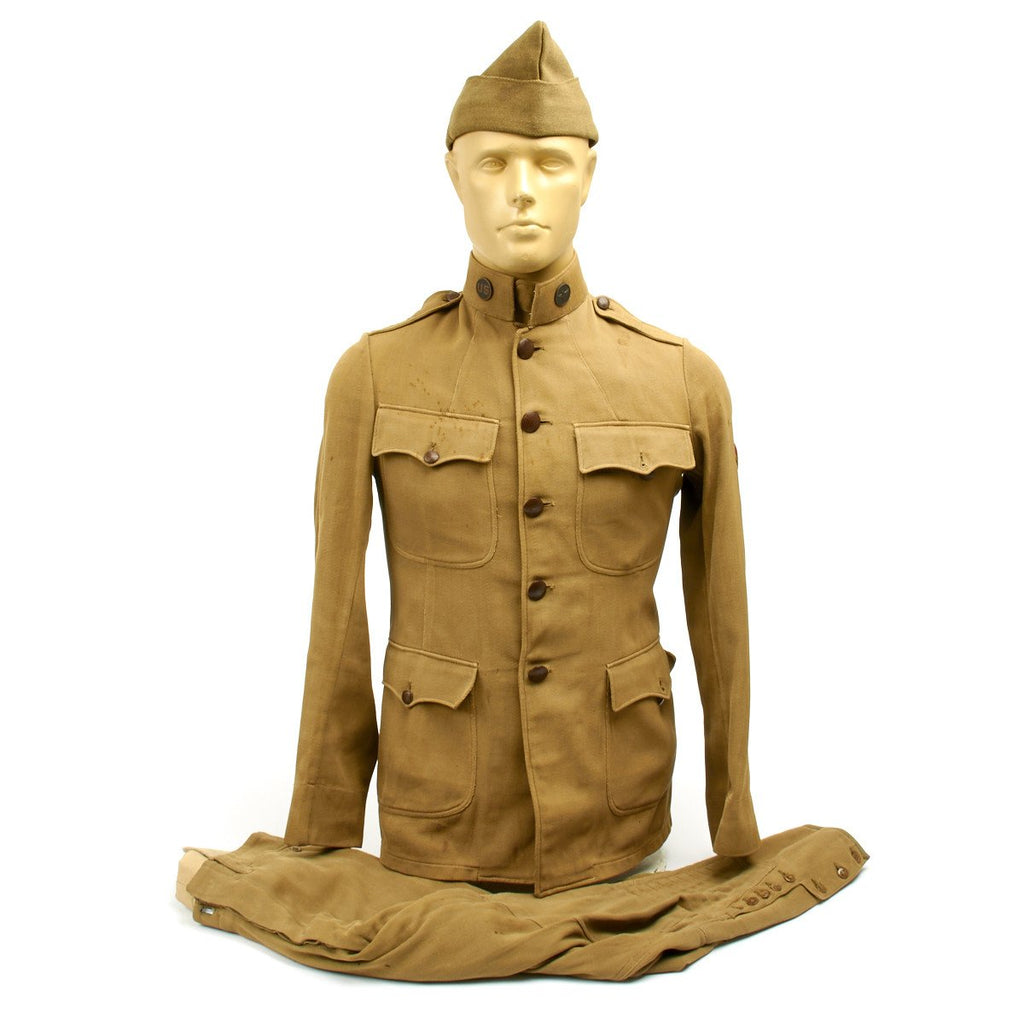-
Original Items: Only one set available. This is a very nice U.S. Aviator's tunic manufactured by KHAN TAILORING CO. OF INDIANAPOLIS as seen on the fine label to the interior. Heavy cotton tunic is in excellent condition with nice early bakelite federal eagle buttons and Army Air Force Collar insignia. Comes complete with matching jodhpurs (pants) and an overseas cap.
Unfortunately, we can find no owner’s name in either tunic or jodhpurs. Tunic is approximately size 36 and jodhpur pants are approximately size 29 waist.
The Aviation Section, Signal Corps,[1] was the military aviation service of the United States Army from 1914 to 1918, and a direct statutory ancestor of the United States Air Force. It absorbed and replaced the Aeronautical Division, Signal Corps, and conducted the activities of Army aviation until World War I, when its statutory responsibilities were suspended for the duration of the war. The Aviation Section organized the first squadrons of the aviation arm and conducted the first military operations by United States aviation on foreign soil.
The Aviation Section, Signal Corps was created by the 63rd Congress (Public Law 143) on July 18, 1914 after earlier legislation to make the aviation service independent from the Signal Corps died in committee. From July 1914 until May 1918 the aviation section of the Signal Corps was familiarly known by the title of its administrative headquarters component at the time, seen variously as the Aeronautical Division, Air Division, Division of Military Aeronautics, and others. For historic convenience, however, the air arm is most commonly referred to by its official designation, the Aviation Section, Signal Corps (ASSC), and is the designation recognized by the United States Air Force as its predecessor for this period.
The Aviation Section began in turbulence, first as an alternative to making aviation in the Army a corps independent of the Signal Corps, then with friction between its pilots, who were all young and on temporary detail from other branches, and its leadership, who were more established Signal Corps officers and non-pilots. Despite the assignment of Lieutenant Colonel George O. Squier as chief to bring stability to Army aviation, the Signal Corps found itself wholly inadequate to the task of supporting the Army in combat after the United States entered World War I on 6 April 1917. It attempted to expand and organize a competent arm but its efforts were largely chaotic and in the spring of 1918 aviation was removed, first from the jurisdiction of the Office of the Chief of Signal where it had resided since its inception, and then from the Signal Corps altogether. The duties of the section were not resumed following World War I and it was formally disestablished by the creation of the Air Service in 1920.
- This product is available for international shipping.
- Eligible for all payments - Visa, Mastercard, Discover, AMEX, Paypal & Sezzle


We Buy Military Antiques
Our team expert buyers travels the world to pay fair prices for entire estate collections to singular items.
START SELLING TODAY
























